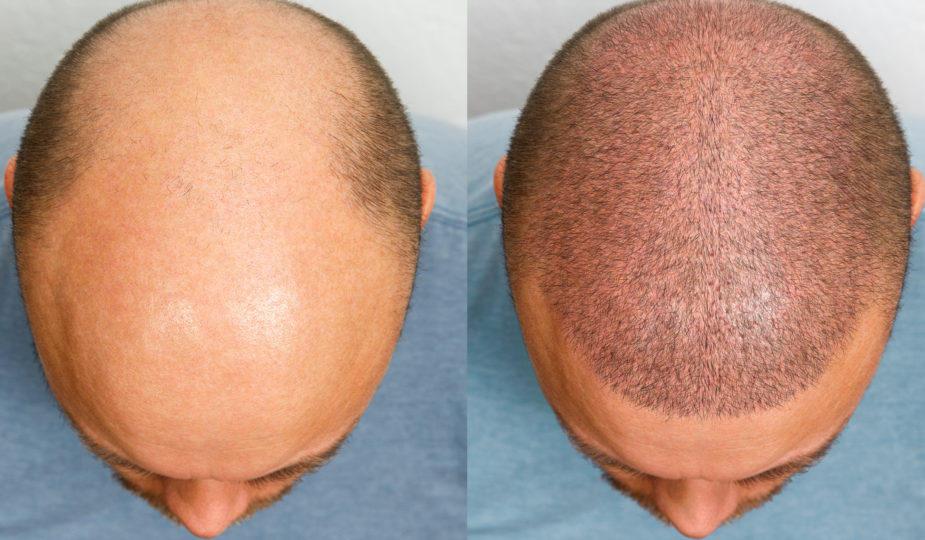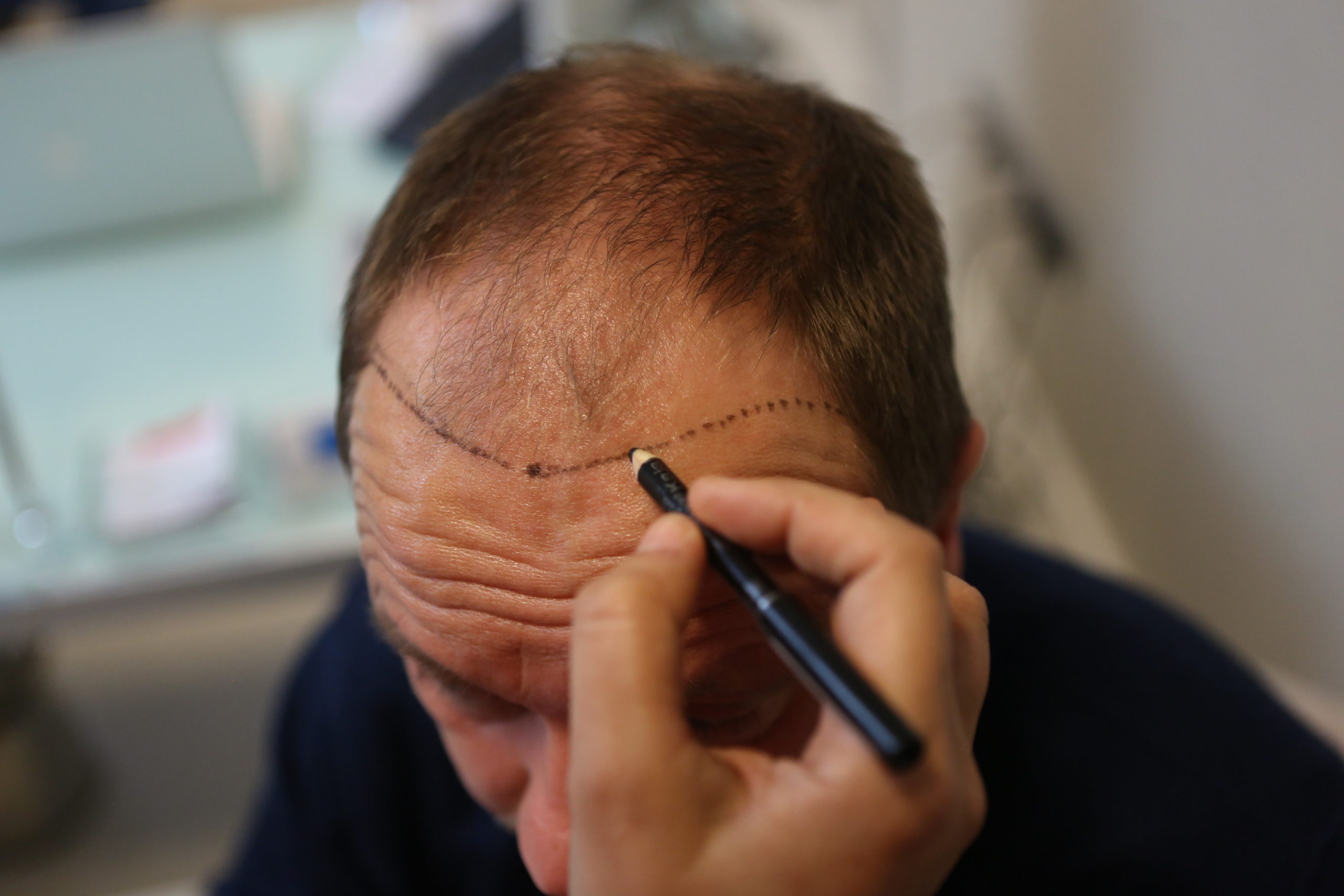
A Man’s Guide To Hair Replacement Systems
Some Hollywood action stars look great even when they’re bald. Take Bruce Willis, Vin Diesel, and Dave Bautista, for example. In real life, however, not all can rock this look, especially men with receding hairlines and irregular patches of thinning hair.
According to the American Hair Loss Association, common male pattern baldness (MPB) or androgenic alopecia is the leading cause of hair loss in men. The organization says 85% of men over 50 will experience thinning hair, which often starts when they reach their 30s. Additionally, 25% of men may show signs of MPB even before their 21st birthday.
Hair problems can impact a man’s self-confidence, negatively affecting their relationships and quality of life. And for individuals seeing early indicators of hair loss, they’ll explore treatment options such as medications or topical solutions and a quick visit to a hair loss salon.
If you’re wondering what you can do to address hair loss, you’ve come to the right place.
Seeking professional help
One of the best ways you can deal with hair loss effectively is to seek professional help. For one, various factors can trigger hair loss, including genetics, illness, nutritional deficiencies, medications, and stress. Hence, it’s crucial to determine why a person is losing hair so proper treatments are considered.
Hair replacement specialists, dermatologists, and physicians can help you decide the best treatment option. Doctors, for instance, can help pinpoint the cause and will discuss how to move forward. Hair replacement specialists and dermatologists, on the other hand, can perform non-surgical hair replacement methods after an individual assessment.
Common hair replacement options
There are various approaches to hair replacement you can explore. And as you discuss professionals, here are some of the options that they can recommend:
- Scalp micropigmentation
This replacement option involves using small needles to deposit ink pigments on your scalp strategically. The ink is permanent, but patients generally need at least two sessions for optimal effects. Scalp micro pigmentation, or SMP, also lasts longer if a client diligently follows the post-treatment care instructions.
SMP is done by a skilled professional who uses various techniques to fulfill a client’s need while maintaining a natural look. This can work on completely bald men or those who have thinning hair sections. The procedure also works great for men and women with hair loss, regardless of the cause.
As a non-invasive treatment, SMP is a great alternative for individuals who don’t want to go under the knife for a hair transplant. It’s also relatively cheaper than the other options, costing USD$ 400 to USD$ 1,000.
- Oral and topical solutions
The Food and Drug Administration has approved two primary hair loss treatment options: Minoxidil and Finasteride. Minoxidil is a non-prescription topical solution and can be bought over the counter, while Finasteride is a prescription drug. These medications may work in situations where hormonal problems cause hair loss and may help slow down hair loss.

- Minoxidil and Finasteride
According to a dermatologist interviewed by the health website webmd.com, Finasteride is clinically more effective than Minoxidil. It works by reducing Dihydrotestosterone (DHT), an androgen that causes early hair loss. Hence, it’s not for individuals experiencing baldness due to hyperthyroidism or undergoing chemotherapy.
Finasteride is originally meant for patients with an enlarged prostate and isn’t generally intended to treat female pattern baldness. Individuals taking it may experience adverse reactions like breast or testicle pain, nipple discharge, and difficulties urinating.
Its close relative, Dutasteride, is also used as a hair loss treatment, although the FDA approval is exclusively for prostate issues. A recent study showed this prescription medication even works better than Finasteride and Minoxidil.
On the other hand, Minoxidil works by opening the blood vessels and stimulating blood flow. This process is said to encourage hair growth. Although generally safe, some users may experience adverse reactions like dizziness, stinging on the affected site, and rapid heart rate. If you experience these symptoms, stop using the product and consult a doctor.
- Corticosteroid injections
For individuals with alopecia areata (AA), which causes patchy hair loss and affects almost 7 million Americans, corticosteroid injections may be a good option. However, this treatment generally works best for baldness resulting from an autoimmune condition, not hormonal-induced hair loss.
Steroids work by suppressing the body’s immune system responsible for attacking healthy tissues, including hair follicles—allowing hair regrowth. According to the Association of American Dermatologists, these injections are administered every one or two months, and hair can grow back in as early as three months.
- Hair transplant
Those looking for a costly yet long-term and permanent solution can turn to their doctor for hair replacement surgery. A hair transplant costs anywhere from USD$ 4,000 to USD$15,000, depending on the volume of the hair being transplanted. The surgery involves several techniques, including scalp reduction, micro-grafting, punch, and slit grafting, and the doctor discusses with the patient to choose the ideal method.
As it is a surgical procedure, a patient will be injected with anesthesia or can be sedated. However, there’s no need for hospital admission, and the patient can go home after the procedure.
Concluding thoughts
Hair loss affects a vast majority of both male and female populations worldwide. While it may not be a big deal to some people, hair problems can impact mental health and disrupt a person’s life.
To address pattern baldness, it’s always best to consult professionals to find the root cause. From there, they can discuss with you the best treatment options based on your goals, lifestyle, and budget.









